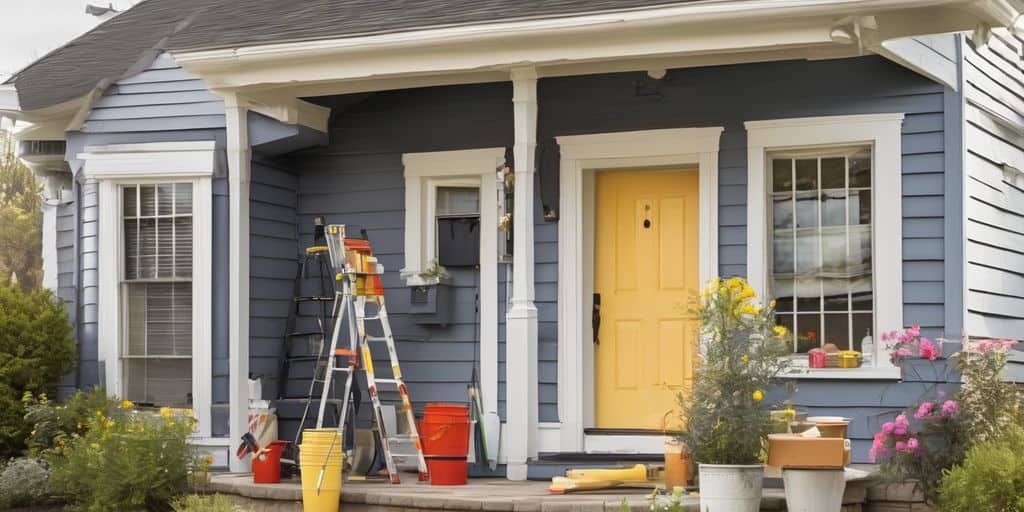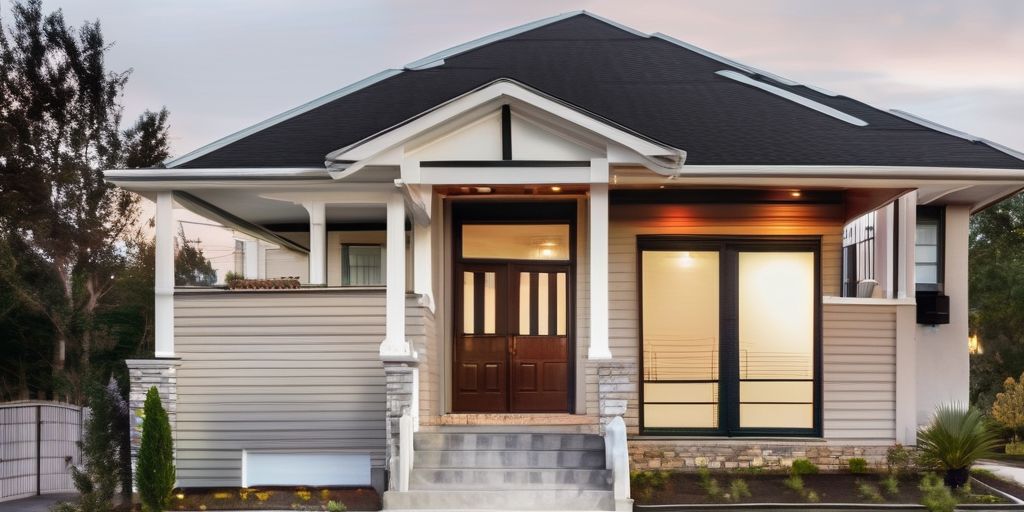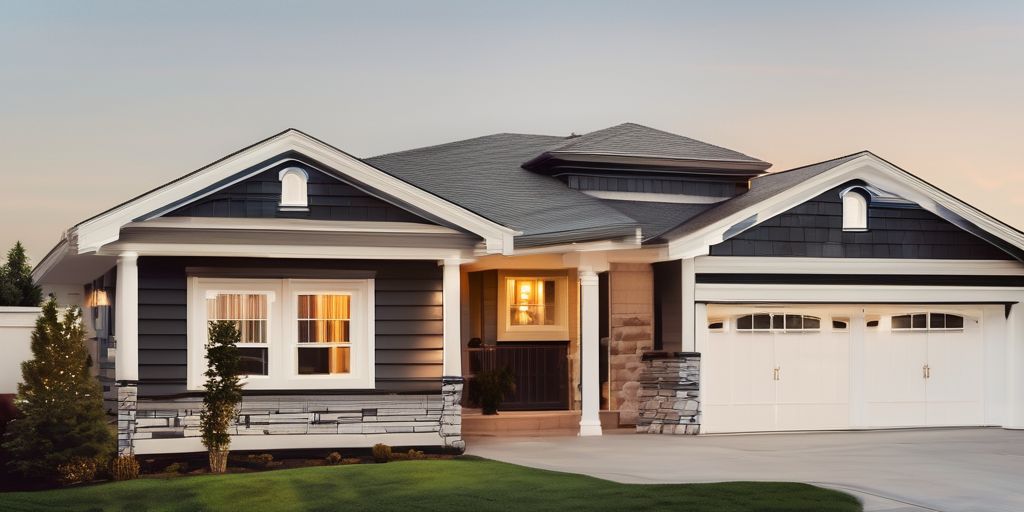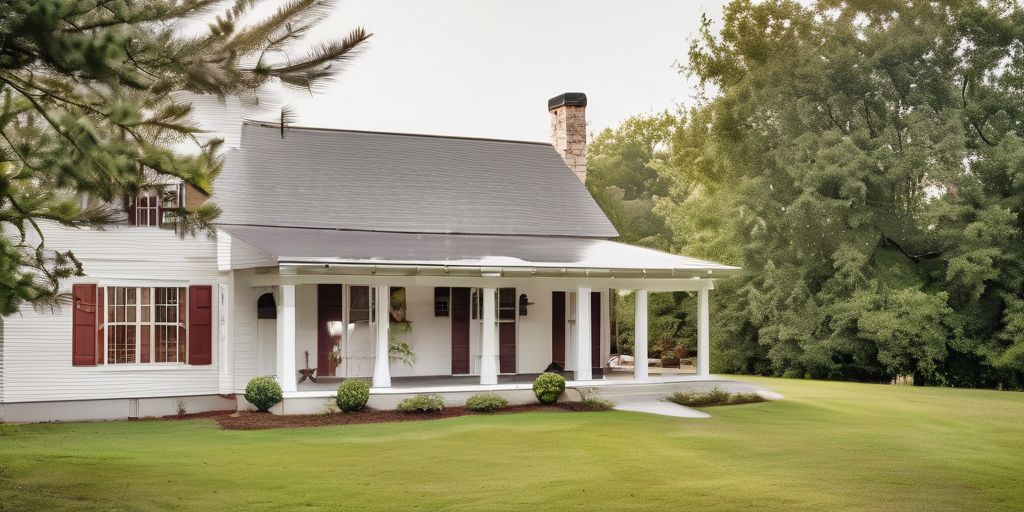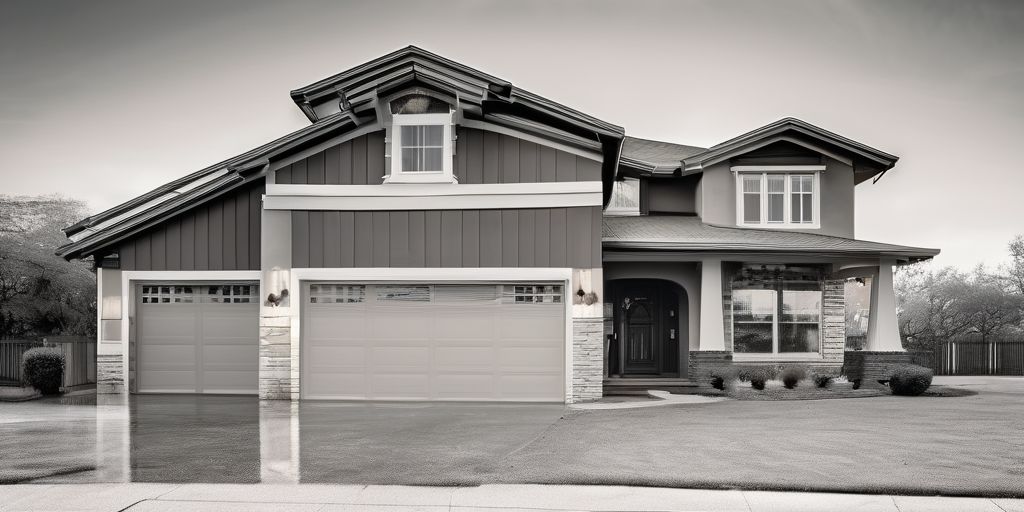Choosing the right tools for professional spray painting in Cambridge is essential for getting great results. With various types of spray guns, nozzles, and protective gear available, understanding how to select and maintain your equipment can make a big difference in your painting projects. This guide will help you navigate the process of selecting the best tools for your needs, ensuring you achieve the best finish possible.
Key Takeaways
- Know the different types of spray guns: airless, HVLP, and compressed air, to choose the right one for your project.
- Select the correct nozzle size and spray pattern to match the paint and surface for a smooth finish.
- Always wear protective gear like masks and goggles to stay safe while painting.
- Keep your spray equipment clean and well-maintained for the best performance.
- Use eco-friendly paints and practices to reduce environmental impact while painting.
Understanding Different Types of Spray Guns
Selecting the right spray gun is essential for achieving a professional finish in spray painting. Here are the main types of spray guns you should know about:
Airless Spray Guns for Large Surfaces
- High Pressure: These guns use high pressure to atomize paint, making them ideal for large areas.
- Thick Coatings: They can handle thicker paints, which is great for exterior surfaces.
- Speed: Airless spray guns allow for quick application, saving time on big projects.
HVLP Spray Guns for Detailed Work
- Efficiency: HVLP (High Volume Low Pressure) guns are known for their efficiency and reduced overspray, making them environmentally friendly.
- Fine Finish: They are perfect for detailed work, providing a smooth and even finish.
- Control: The lower pressure allows for better control over the paint application.
Compressed Air Spray Guns for Versatility
- Versatile Use: These guns can be used for a variety of projects, from small touch-ups to larger applications.
- Adjustable Patterns: They allow for adjustable spray patterns, making them suitable for different tasks.
- Comfort: Many models are designed for comfort, reducing fatigue during extended use.
Tip: Always consider the nozzle size when selecting a spray gun, as it greatly affects the finish quality.
In the context of Cambridge, where the architecture varies from historic buildings to modern designs, understanding these different types of spray guns can help you choose the right tool for your project. Whether you’re working on a detailed restoration or a large exterior job, the right spray gun can make all the difference in achieving a professional result.
Choosing the Right Nozzle for Your Project
Nozzle Size and Paint Thickness
Choosing the right nozzle size is essential for achieving the desired finish. Here are some key points to consider:
- Larger nozzles are better for thicker paints, allowing for a smoother application.
- Smaller nozzles work well for fine finishes, providing more control over the paint flow.
- For latex paint, a tip size between 0.013 and 0.017 inches is recommended for most interior projects.
Adjusting Spray Patterns
The ability to adjust the spray pattern can greatly affect your project’s outcome. Consider the following:
- Narrow stream: Ideal for detailed work and precision.
- Wide fan: Best for covering large areas quickly.
- Adjusting the nozzle can help you achieve the right pattern for your specific needs.
Selecting Nozzles for Different Finishes
Different finishes require different nozzle types. Here’s a quick guide:
- Matte finishes: Use a finer nozzle for a smooth application.
- Glossy finishes: A larger nozzle can help achieve a more even coat.
- Textured finishes: Consider a nozzle designed for thicker materials.
Remember, selecting the right nozzle is crucial for controlling the spray pattern and paint flow. This can make a significant difference in the quality of your work, especially in areas like Cambridge where the weather can be unpredictable.
Essential Protective Gear for Spray Painting
When engaging in spray painting, safety should always come first. Proper protective gear is essential to guard against the hazards of paint fumes and overspray. Here are some key items to include in your safety kit:
Importance of Respirators and Masks
- Respirators: A good respirator filters out harmful vapors and particles. Make sure it fits well and is rated for paint fumes.
- Masks: These protect your lungs from inhaling toxic fumes.
Protective Clothing and Gloves
- Gloves: Use nitrile or neoprene gloves to keep your hands safe from paint and chemicals.
- Coveralls: Disposable or washable coveralls protect your skin and clothes from paint splashes.
Eye Protection and Safety Measures
- Safety Goggles: Protect your eyes from paint and debris with impact-resistant goggles.
- Ventilation: Ensure your workspace is well-ventilated to reduce the concentration of harmful substances.
Remember, wearing the right protective gear not only keeps you safe but also improves the quality of your work by preventing contamination.
Regularly check and replace your protective gear to maintain its effectiveness. For instance, change your respirator’s filters according to the manufacturer’s guidelines or whenever you notice a smell while wearing it. This is especially important when working near landmarks like the historic King’s College Chapel in Cambridge, where safety and quality are paramount.
Maintaining Your Spray Painting Equipment
Proper maintenance of your spray painting equipment is essential for achieving the best results and extending its lifespan. Regular upkeep ensures consistent performance and quality finishes. Here are some key maintenance tips:
Regular Cleaning and Inspection
- Clean your spray gun immediately after use to prevent paint from drying and clogging the mechanisms.
- Periodically check for worn parts, such as seals and filters, and replace them as needed.
- Inspect hoses and connections for leaks or damage.
Lubricating Moving Parts
- Regularly lubricate moving parts to ensure smooth operation and prevent rust.
- Use appropriate lubricants as specified in the manufacturer’s manual.
- Pay special attention to the trigger and nozzle areas.
Storing Equipment Properly
- Store your spray gun in a cool, dry place to avoid moisture damage.
- Keep it in a protective case or cover to prevent dust accumulation.
- Ensure that all parts are disassembled and cleaned before storage.
Remember, a well-maintained spray gun will provide a consistent spray pattern and pressure, which is essential for professional-quality finishes.
By following these maintenance tips, you can ensure that your equipment remains in top condition, ready for your next project, whether you’re working on a home near the beautiful River Cam or elsewhere in Cambridge.
Eco-Friendly Practices in Spray Painting
Using Low-VOC Paints
Using low-VOC (Volatile Organic Compounds) paints is essential for better air quality. These paints are healthier and safer for both the environment and the painter. When choosing paints, look for those with natural pigments and binders that are less harmful.
Recycling and Proper Disposal
Implementing sustainable practices during the painting process is crucial. Here are some steps to follow:
- Collect and recycle empty paint cans.
- Dispose of hazardous materials at designated facilities.
- Reuse leftover paint for touch-ups or donate it to community projects.
Energy-Efficient Equipment
Using energy-efficient tools can significantly reduce the environmental impact of spray painting. Opt for equipment that consumes less power and lasts longer. This not only saves energy but also ensures consistent performance.
In the vibrant city of Cambridge, where the beauty of the surroundings is cherished, adopting eco-friendly practices in spray painting can make a significant difference.
By following these eco-friendly practices, you can contribute to a healthier environment while achieving professional results in your spray painting projects.
Preparing Surfaces for Spray Painting
Proper surface preparation is essential for achieving a high-quality finish in spray painting. A clean and smooth surface ensures better paint adhesion and durability. Here are some key steps to follow:
Cleaning and Sanding Techniques
- Remove Contaminants: Start by cleaning the surface to eliminate grease, dirt, and other debris. This may involve:
- Pressure washing
- Scrubbing with soap and water
- Sanding rough areas
- Sanding: For surfaces that are uneven or have old paint, sanding helps create a smooth base. Use sandpaper or a sanding block to even out imperfections.
Priming Different Materials
- Choose the Right Primer: Depending on the material, a primer may be necessary. Here’s a quick guide:
Material Recommended Primer Type Wood Oil-based or latex primer Metal Rust-inhibiting primer Drywall Water-based primer - Apply Evenly: Ensure the primer is applied evenly to avoid streaks or uneven color.
Repairing Damaged Surfaces
- Fix Imperfections: Before painting, repair any scratches or dents. Use fillers or putty to smooth out these areas. Sand them down once dry to ensure a flat surface.
- Check for Moisture: Make sure the surface is completely dry before applying paint. Moisture can lead to peeling and bubbling.
Remember, taking the time to prepare your surfaces properly can save you from costly mistakes later on. In Cambridge, where weather can change quickly, always check the forecast to avoid painting on rainy days.
Managing Environmental Factors
When spray painting, it’s essential to consider the environmental factors that can affect your project. Proper management of these factors can lead to better results and a safer experience. Here are some key points to keep in mind:
Monitoring Wind Conditions
- Check the wind speed before starting your project. High winds can carry paint away, leading to uneven coverage.
- Use a wind meter to measure conditions accurately.
- Avoid painting on windy days to prevent overspray and waste.
Using Windbreaks and Shields
- Set up barriers to protect your work area from wind.
- Use tarps or boards to create a shield around your painting zone.
- Ensure that these barriers are stable and won’t fall over during your work.
Optimal Weather Conditions for Spray Painting
- Aim for dry days with low humidity. Moisture can affect paint adhesion.
- Check the temperature; most paints work best between 50°F and 85°F.
- Avoid painting during rain or extreme heat to ensure a smooth finish.
In the vibrant city of Cambridge, where the beauty of the surroundings is paramount, managing environmental factors can significantly enhance the quality of your spray painting projects.
By following these guidelines, you can ensure a successful spray painting experience while being mindful of the environment around you. Remember, preparation is key!
Selecting Quality Paints for Professional Results
When it comes to professional spray painting, choosing the right paint is essential for achieving a high-quality finish. Here are some key factors to consider:
Compatibility with Different Surfaces
- Metal surfaces: Use paints that adhere well and prevent rust.
- Wood surfaces: Opt for paints that penetrate and protect against moisture.
- Plastic surfaces: Select paints designed for flexibility to handle expansion and contraction.
- Masonry: Choose breathable coatings that allow moisture to escape.
Durability and Weather Resistance
- Look for paints that are weather-resistant, especially for outdoor projects. In areas like Cambridge, where weather can be unpredictable, this is crucial.
- Consider paints with low volatile organic compounds (VOCs) to minimize environmental impact.
Recommended Paint Types
- Water-based acrylics: These are easy to clean and have low VOCs, making them a popular choice for many projects.
- Oil-based paints: These offer excellent durability and are often recommended for surfaces that require a tough finish.
- Primers: Always use a suitable primer to create a uniform base, which is vital for achieving a consistent color and finish.
| Paint Type | Best For | Key Features |
|---|---|---|
| Water-based acrylics | General use | Easy cleanup, low VOCs |
| Oil-based paints | High durability surfaces | Tough finish |
| Primers | Surface preparation | Enhances adhesion and coverage |
Remember, the right paint can make all the difference in the outcome of your work. Proper surface preparation is just as important as the paint itself.
When it comes to achieving a professional look for your home, choosing the right paint is essential. Quality paints not only enhance the appearance but also protect your surfaces for years to come. Don’t settle for less! Visit our website today to learn more about how we can help you transform your home with our expert painting services.
Conclusion
To wrap things up, picking the right tools for professional spray painting in Cambridge is key to getting great results. By thinking about what kind of project you’re doing, the surface you’re painting, and the finish you want, you can select the best equipment for the job. Investing in good tools not only makes your work look better but also makes the painting process smoother and more enjoyable. Always remember, having the right gear can truly change the outcome of your project.
Frequently Asked Questions
What types of spray guns are best for professional use in Cambridge?
For professional spray painting in Cambridge, the best types of spray guns include HVLP (High Volume Low Pressure), airless, and traditional spray guns.
What should I look for when selecting a spray gun?
When picking a spray gun, consider features like adjustable pressure, nozzle size, and how easy it is to clean.
How can I keep my spray gun working well?
To keep your spray gun in good shape, clean it after each use, check for blockages, and lubricate moving parts when needed.
Which paint brands are recommended for spray painting in Cambridge?
Some recommended paint brands for spray painting projects in Cambridge are Sherwin-Williams, Benjamin Moore, and PPG.
How can I know if a paint will work on a specific surface?
To check if paint is suitable for a surface, consider the material, whether it needs a primer, and the type of paint.
What safety steps should I take while spray painting in Cambridge?
When spray painting in Cambridge, wear protective gear, work in a well-ventilated area, and follow the instructions for the paints and tools.

